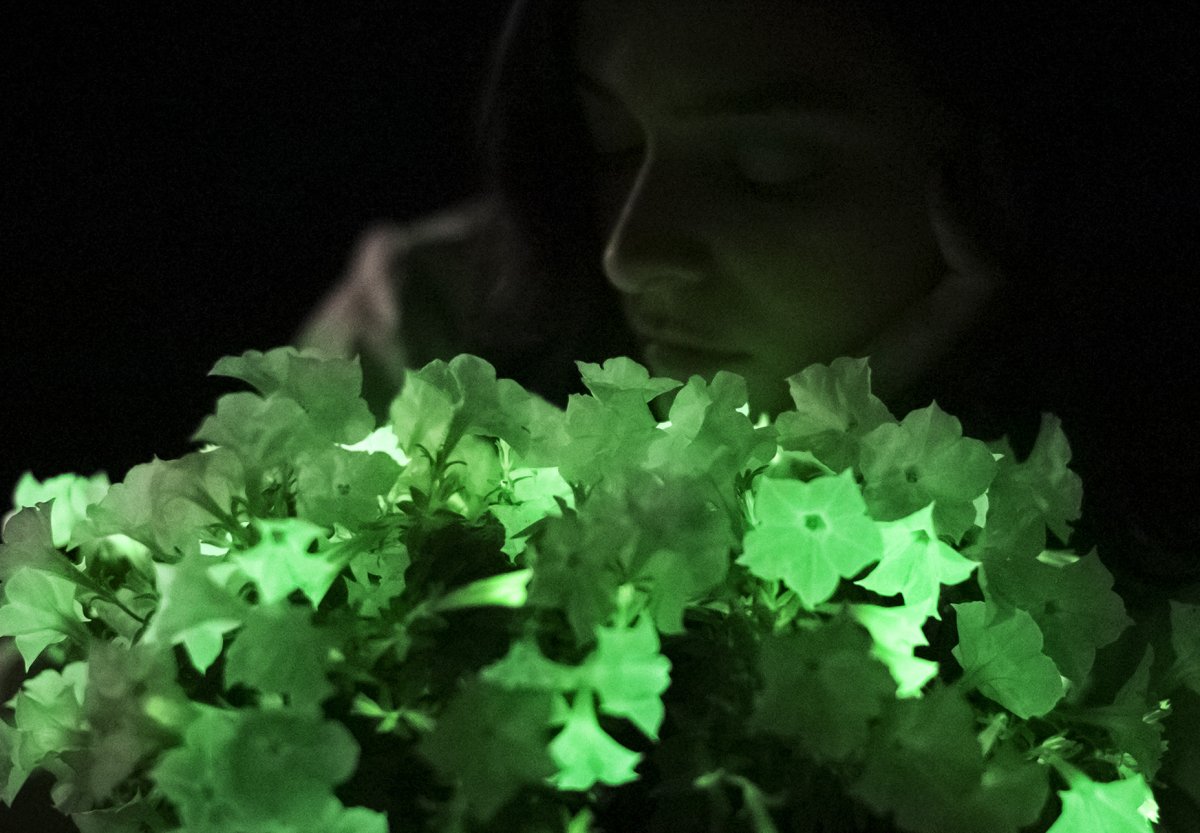The US start-up Light Bio has received approval to sell its bright petunias. The US Department of Agriculture’s (USDA) Animal and Plant Health Inspection Service (APHIS) had previously examined whether the genetically modified plant poses an increased risk to insects. The authorities have now given the green light and Light Bio wants to deliver the first plants in spring 2024 – but initially only in the USA.
Advertisement
Unlike various animal species, such as some fish, worms and amphibians, as well as bacteria and some fungi, plants in the wild have not developed the ability to bioluminesce. Natural substances called luciferins are responsible for the glow. When they react with oxygen, supported by the enzyme luciferase, they release energy in the form of light.
It glows green
Researchers in the field of synthetic biology have been working for years on transferring this lighting mechanism to plants. In 1986, a team succeeded in introducing firefly genes into plant cells for the first time and causing a dim glow. A research group relied on a different donor in 2020. They introduced the enzyme responsible for the glow from the DNA of the fungus Neonothopanus nambi into tobacco plants.
Image 1 of 5 Bright tobacco plants were the predecessor of the bright petunias.
(Image: Light Bio)
Karen Sarkisyan was among the scientists involved. He researches at Imperial College London, specializes in fluorescent proteins and, as a co-founder of Light Bio, is also behind the glowing petunias. Also the founder of Light Bio is Keith Wood, one of the authors of the 1986 publication. “We are taking a natural process from a fungus that is normally found in tropical forests and transferring that to plants,” Sarkisyan told US magazine Wired. is during the day Neonothopanus nambi brown, but at night it glows greenish – just like the genetically modified ornamental plants.
Glowing plants with success and failure
The idea of the glowing plant already caused a stir in 2013. At that time, a Kickstarter project called “Glowing Plant” found numerous supporters. The creators around Antony Evans had collected over $480,000 at the time. The plan was to print genes from fireflies or bioluminescent bacteria and insert them into a tobacco plant so that it emits a greenish light. Each supporter should receive such a plant for $40, and a bright rose for $150. But it did not get to that. There was no deliverable product. The initiators of the Kickstarter campaign founded the company Taxa Biotechnologies, which was also unsuccessful. And Evans now works at the company Wild Earth, which specializes in dog food.
Based on the approval granted, Light Bio appears to have learned from this failure of the competition. There are currently around 10,000 people on the waiting list. “We are now making production plans for limited availability in the spring,” says Wood. The price for the bright petunias has not yet been determined. “The plants do not require any special care. They are completely normal, except for the fact that they glow at night,” said Wood. They initially took care of approval for the USA. At a later date, they also want to seek similar approvals in other regions. including Europe.
(jl)
To home page
